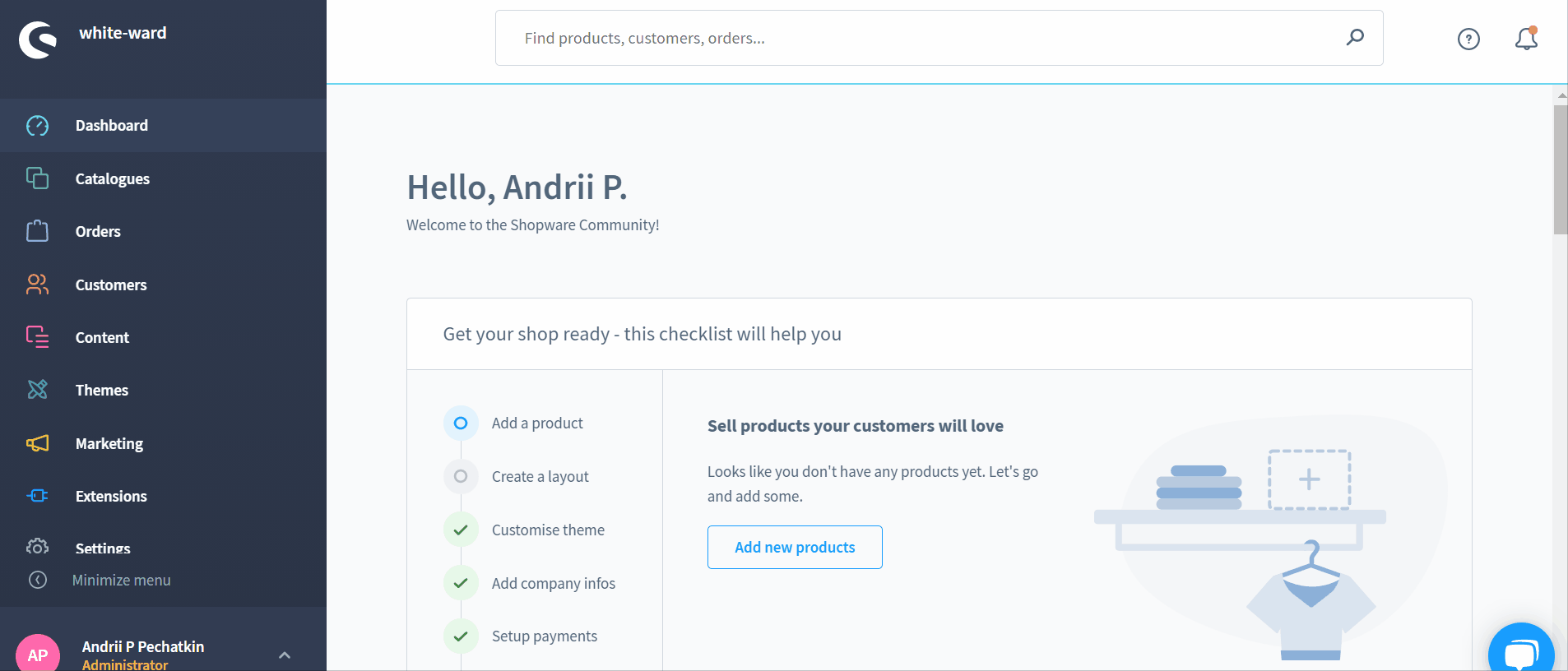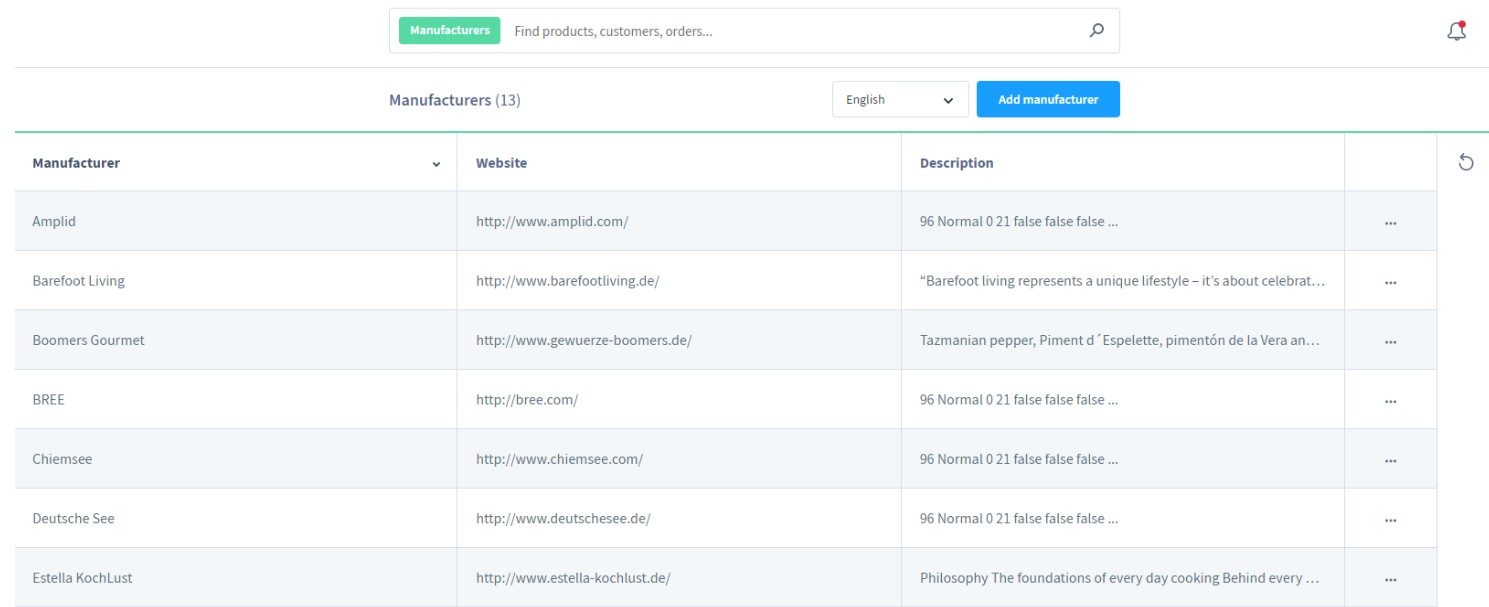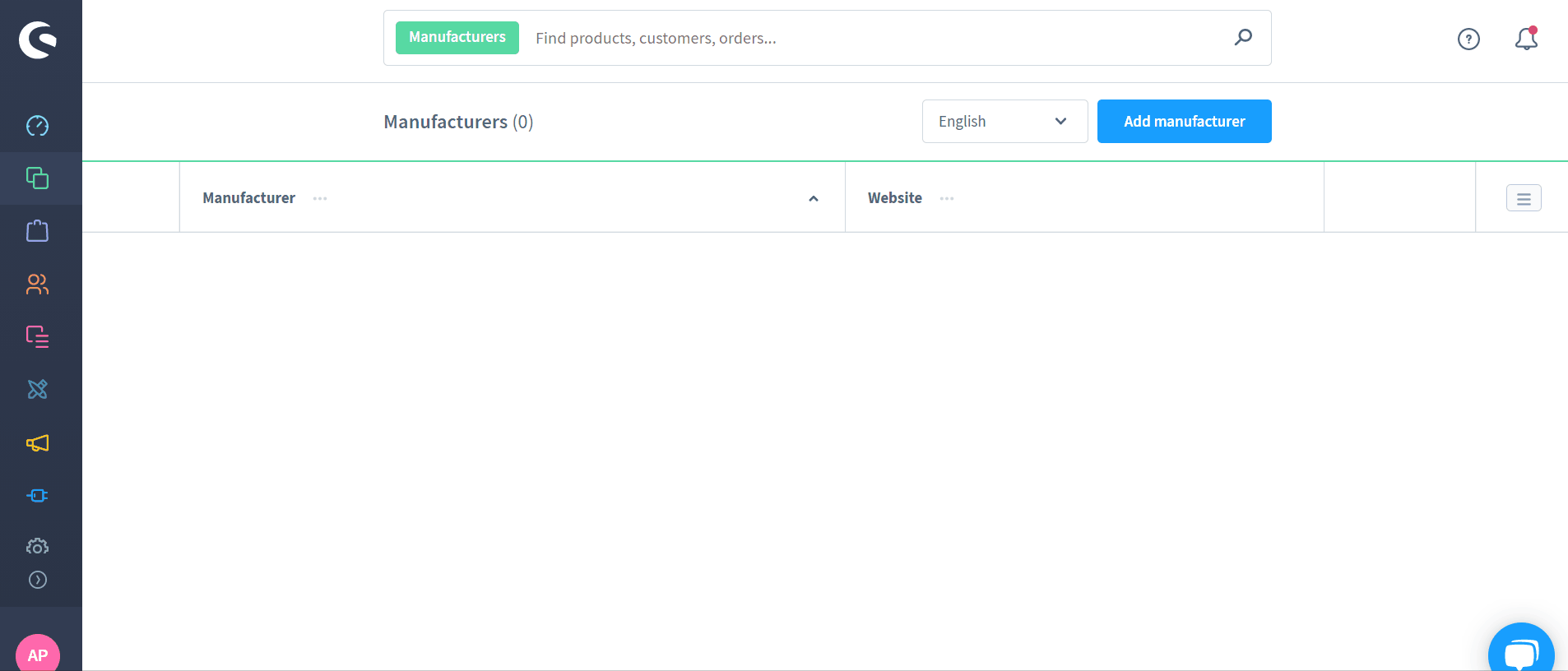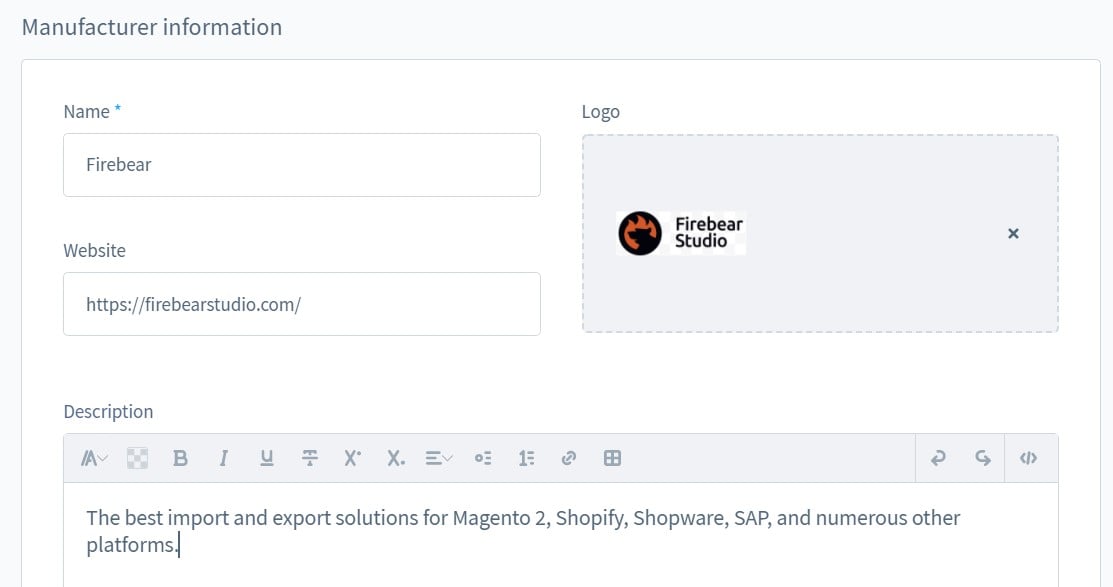Exploring Shopware: How to Add Manufacturers in Shopware 6

Below, we continue our journey into the depths of the Shopware 6 administration. Now, our attention is captured to potential business partners and producers of goods associated with the products you sell on your digital storefront. As you have probably guessed already, we are going to talk about Shopware 6 manufacturers which are another important part of the Shopware 6 catalog section of your administration’s main menu. This entity contains information about each individual company that produces products displayed on your e-commerce website. In the following article, we briefly describe the Manufacturers screen in the administration and explain how to create manufacturers in Shopware 6. You will discover where to look for the corresponding backend section and what actions to take there. Also, we provide advice on how to import and export manufacturers in Shopware 6. More materials about the platform are available in this article: Shopware 6 Guides.

Note that we provide Shopware integration with external platforms. Contact our support for further information or try our Improved Import & Export Extension for Shopware.
Table of contents
- 1 How to Find Manufacturers in Shopware 6
- 2 How to Add a Manufacturer in Shopware 6
- 3 How to Import Manufacturers to Shopware 6
- 4 Shopware 6 Essentials FAQ
- 4.1 How to create a Shopware ID?
- 4.2 How to create a Shopware account?
- 4.3 What is Shopware master data?
- 4.4 How to add a shop in Shopware?
- 4.5 How to add a payment method in Shopware?
- 4.6 How to create a deposit in Shopware?
- 4.7 How to purchase Shopware extensions?
- 4.8 How to get support in Shopware?
- 4.9 How to migrate to Shopware 6?
- 4.10 How to automate import and export processes in Shopware 6?
- 4.11 How to integrate Shopware 6 with external systems?
How to Find Manufacturers in Shopware 6
The Manufacturers screen is located under Catalogues -> Manufacturers of the main menu.

It displays an overview of the already created manufacturers, showing the most important information right in the grid.

Besides, Shopware 6 lets you adjust the sorting of the table. You only need to click on the respective column heading to switch between ascending and descending orders.
Also, note that you can activate a context menu for each manufacturer. The corresponding button is available on the right side of each grid line.

With the help of this instrument, you get the ability to edit, delete, or duplicate an existing record. Hit the Edit option to proceed to the editing view for the manufacturer. Use the Duplicate option to copy the selected manufacturer with the stored data to a new record. Click Delete to remove the manufacturer from the system. However, the last option works only when a manufacturer is not assigned to any product.
How to Add a Manufacturer in Shopware 6
To add a new manufacturer in Shopware 6, hit the Add manufacturer button.

The system transfers you to a new screen where you can fill in data about your vendor.

Specify manufacturer’s name, upload their logo, add a website, and create a description. Note that you can use a basic editor to order your text about a vendor.

Note that there is only one mandatory field – the manufacturer’s name.
How to Import Manufacturers to Shopware 6
If you need to import manufacturers to your new Shopware 6 website, you’ve come to the right place. Our team lets you eliminate various routine processes associated with Shopware 6 administration management. We can help you import your existing data with zero obstacles. Use our to transfer manufacturers with all the associated data to and from your e-commerce website. You can also utilize it to import other entities to Shopware 6. Contact our support for more details. Please, consult our specialists before running any transfers to and from Shopware 6, we will help you get the most out of the extension.
Shopware 6 Essentials FAQ
How to create a Shopware ID?
You need to create a Shopware account to receive a Shopware ID. We explain how to do that in the next answer.
How to create a Shopware account?
Creating a Shopware account takes place on a registration page. You just need to click the Register Now link and fill in the form. After that, Shopware sends a confirmation email to the email address specified in the registration form.
What is Shopware master data?
Shopware master data is all the information you provide about yourself and your company. It usually consists of your contact information, such as an address, email, phone, company name, etc.
How to add a shop in Shopware?
Adding a new Shopware shop is a straightforward process that takes place in your merchant area. Click the corresponding link at the right section of your start-screen, choose whether you want to create a cloud storefront or register an on-premise website, specify information about your new Shopware shop, and save the provided data.
How to add a payment method in Shopware?
Proceed to Basic Information -> Accounting to add a payment method to your Shopware account. The system lets you use PayPal, credit card, or direct debit to add funds to your store. After that, you can use them to purchase extensions and themes.
How to create a deposit in Shopware?
If you want to buy additional tools for your Shopware store, it is necessary to pay in advance for them. You can create a deposit under Merchant Area -> Shops. Choose a shop to add funds to, click Open Account Details, and add funds there.
How to purchase Shopware extensions?
Now, let’s see how to use your deposit in Shopware. Visit the Shopware Marketplace, choose tools you want to buy, and complete the purchase. Alternatively, you can use the Plugin Manager.
How to get support in Shopware?
For support regarding your Shopware account and license write to info@shopware.com or call the number +49 2555 9288 50. Send inquiries about accounting and financial services to financial.services@shopware.com or +49 2555 9288 510.
How to migrate to Shopware 6?
Migration to a new e-commerce platform is always a complex task and it is never based on its default import and export tools. You cannot perform lots of complex data transfers using the default tools only. It is always necessary to install a more powerful third-party solution that automates data transfers and helps with different attribute standards. Therefore, we recommend using the Improved Import & Export tool for Shopware 6 to run the migration. Contact our team for more information.
How to automate import and export processes in Shopware 6?
For regular data updates, we also recommend using the Improved Import & Export extension for Shopware 6. The module can automate import and export procedures. You only need to create a schedule to run them automatically.
How to integrate Shopware 6 with external systems?
Connecting to external systems may be as complicated as running a migration. Therefore, you can also rely on the Improved Import & Export extension for Shopware 6 to integrate your e-commerce storefront with ERPs, CRMs, accounting tools, and so on. Our module not only automates import and export processes but also modifies data according to the requirements of your Shopware store upon import. Furthermore, it applies changes to the exported information following the guidelines of the connected platforms.









